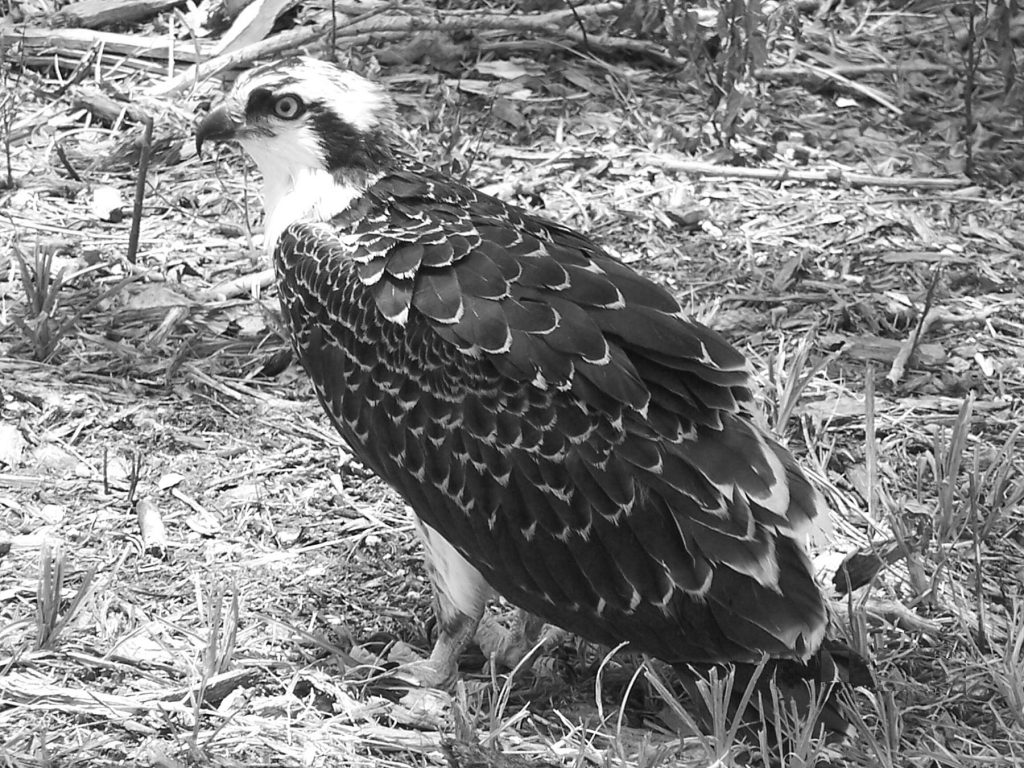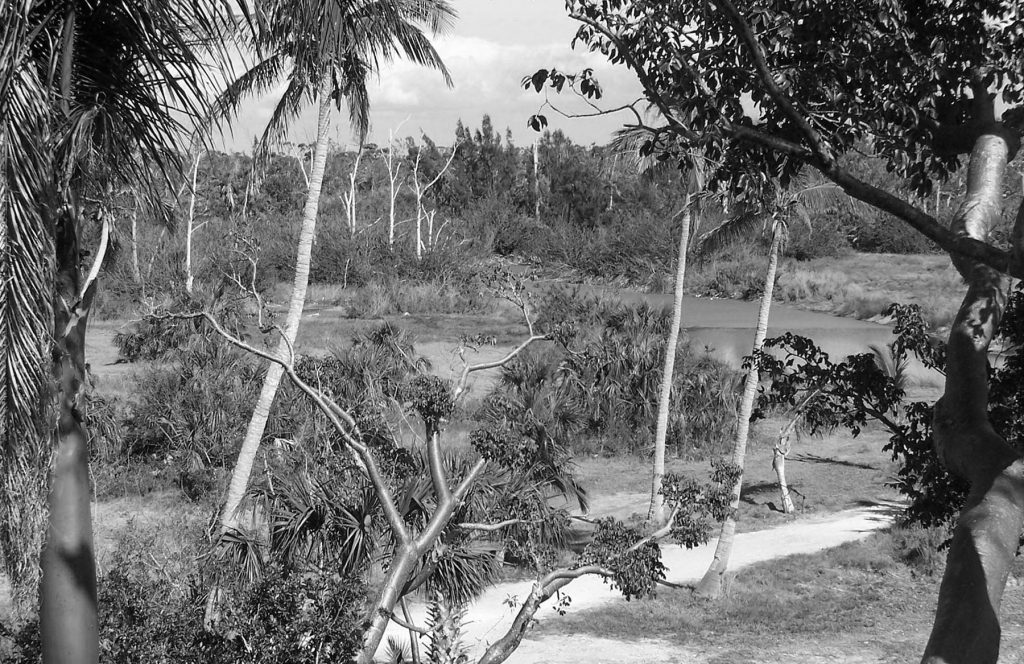Since Hurricane Charley slammed the west coast of Florida (see September, 2004 Friends newsletter, Vol. 3, No. 3, pp. 4-6), life has re-emerged in a spectacular way on the Calusa Heritage Trail.
One area that is immediately recognizable is the native vegetation that has returned on the grassy landscape after years of cattle, citrus, and other outside intrusions that restrained the natural spread and abundance of vegetation. Sea oxeyes have bloomed all over the area where bahia grass had been growing for so long, and within a few years the area should be returned to some semblance of its pre-modern vegetation. Wildflowers and ground- cover vegetation are also prominent, adding to the food supply for bees, insects, mammals, and birds.
Ospreys have returned with a vengeance, seemingly in defiance of what Mother Nature threw at them. Within a few days of completing the construction of their nests, the females laid eggs and began the hatching process of about six and a half weeks. We are happy to announce the birth of three baby ospreys in the main nest on the Pineland road side, at least two baby ospreys over by the Ibis Pond, and at least two more in the Australian pine at the beginning of Citrus Ridge, for a total of seven new residents along the Calusa Heritage Trail. Four Carolina wrens have hatched on the back porch of the RRC headquarters.
Earlier I mentioned bees. These bees have been through the worst of what happened after Hurricane Charley. One Australian pine that was removed as an exotic invasive housed about forty thousand bees that had made a home in a hole at the top of the tree. This was realized only after the tree was brought down, and it was discovered that they were residing in the treetop. The hive was dropped about sixty feet and slammed into the ground, completely shaking the honey all over the nest. The tree was put on a wood pile to be chipped, but the nest portion was removed with the Blue Dawg (our field vehicle) and a chain and set aside, hoping the hive would survive.
Unfortunately all of the honey rotted and the hive was abandoned after a period of time. However, I put out a jug of sugar water for the bees to feed on because the flowers had not bloomed and the honey was unusable. The part of the tree that was preserved has now resumed its position in nature, and a hive of bees has returned to re-claim its former place along the Trail. Although the original nest was completely destroyed, it was soon cleaned out by raccoons and worms (with a little human help, including the retrieval of beeswax and the honey comb). I’ve also supplied some protection for the bees from wildlife and water intrusion, both to ensure the safety of the hive, and for pollination of the beautiful flowering plants that are enjoyed by our visitor.
This article was taken from the Friends of the Randell Research Center Newsletter Vol 4, No. 2. June 2005.

